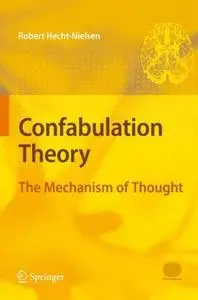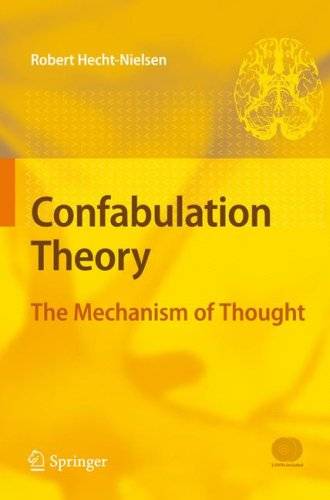Confabulation Theory: The Mechanism of Thought
Publisher:Springer( 2007-07) | ISBN-10: 3540496033 | PDF | 4.3 Mb | 245 pages
Confabulation theory addresses the premier scientific question: How does brain information processing, or cognition, work? Cognition is an outgrowth of movement: brain modules, discrete bodies of neuronal tissue which function like muscles, evolved specifically to exploit pre-existing neuronal muscle-control mechanisms and were successfully redeployed to carry out all types of cognition in macroscopic animals.
Each brain module describes one attribute, via activation of one of many symbols, collections of specialized neurons. An individual axonal knowledge link unidirectionally connects a source symbol in a module with a second meaningfully co-occurring target symbol in a second module. A module receiving knowledge links from symbols on other modules can be commanded to 'contract,' confabulate, yielding a single active conclusion symbol, that symbol having the highest level of summed incoming knowledge link excitations. Multiconfabulation, multiple modules confabulating while mutually communicating via knowledge links, involves massively parallel application of knowledge links. When a module reaches a conclusion, action commands axonally connected from that conclusion are instantly launched, causing all nonreflexive and nonautonomic behavior. The power of cognition derives from the massive parallel application of knowledge, the interoperability of knowledge links across attributes, and the context-sensitive triggering of new behaviors, or amendments to ongoing behaviors.



